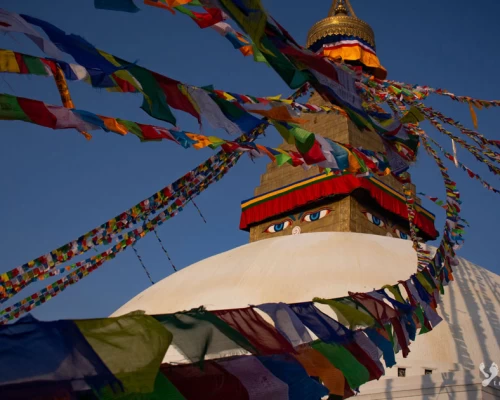Morning: Swayambhunath, situated in the west of Kathmandu on the hillock. Swayambhunath (the god who is self created), is the perfect illustration in the Nepal in the both Buddhist and Hindus religion. In fact, the Stupa and the Pagoda are the mixed in the both Buddhist and Hindus people as the temple the home of God. Visit Tibetan monastery, with prayer wheels and prayer flags, the butter lamps.
Afternoon: Visit the durbar square of Kathmandu heart of the city where we find many other temples dedicated to the divinity of different Hinduism. It is most often called the Hanuman Dhoka Palace by the locals rather than Kathmandu Durbar Square on account of the big sculpture of the Monkey god – Hanuman placed at the entrance of the Palace, which is now a museum that houses the souvenirs of Shah Kings. A pavilion of wooden temple of Kasthmandap. The legend of constructed by a singletree wood. The temple of Kumari, living goddess. Shiva Parvati Temple, various shrines situated inside the square premises, carvings, Bhairav temple. One can also visit Indra Chowk, Seto Machhindranath temple and Annapurna temple, which are ten minutes' walk from the square. Kathmandu Durbar Square was listed in UNESCO World Heritage Site in 1979.
King Yaksha Malla divided the valley into four parts – Kathmandu, Bhaktapur, Patan and Kirtipur and presented them to his four children, three sons and one daughter respectively. Later, the three brothers started an artistic competition or warfare to outdo each other in impressive constructions. Thus, the three Durbar Squares were made, so rich in artifacts and craftsmanship.
Note that during the April 25th earthquake in Nepal, Kathmandu Durbar Square suffered a lot of damage, Half a dozen temples collapsed. But it's still a marvelous complex. It was under reconstruction till beginning of 2020 and will continue for years.




